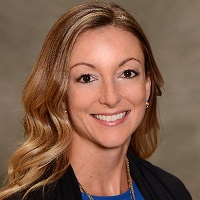 By Erin Wabol, Chief Marketing Officer, Agency Ten22
By Erin Wabol, Chief Marketing Officer, Agency Ten22
Twitter: @HealthITMKTG
Twitter: @AgencyTen22
Held one day before the HIMSS19 Conference kickoff, the Revenue Cycle Solutions Summit covered twelve sessions in eight hours. Here is my take on the topics covered on stage, and off.
Back to the Future—2018 and 2019 Similarities
My first observation was the awkward similarity between last year’s topics and those covered this year. As Jess Clifton shared in 2018, this year’s slides also covered the continued rise in high-deductible health plans, a growing emphasis on patient consumerism (focus of the keynote session) and the strong connection between a patient’s payment process and the overall patient experience. Though I understand healthcare technology is a journey, I noted the overlap in the Summit’s 2018 and 2019 subject matter. I think it would be interesting to create HIMSS Revenue Cycle Summit recaps across the next 5 to 10 years to show the revenue cycle trajectory.
A New Kind of Revenue Cycle: Cybersecurity and Consumer Profiles
Keynote speaker Karl West, CISO and Association Vice President for Intermountain Healthcare, talked about the importance of cybersecurity in the consumer-driven revenue cycle. He listed a few reasons why the relationship between cybersecurity and revenue cycle organizations is so important—one being that the future state of healthcare is consumer centric versus provider or payer centric. Unique risks with the consumer revenue cycle include fraud, breach, PHI and cloud. Healthcare organizations are coming under attack now more than ever from a security standpoint. According to West, healthcare cyberattacks will continue to increase with new areas of vulnerability that weren’t available before. Overall, risks are changing for revenue cycle departments. His departing notes were to be an enabler of healthcare consumerism while preparing and designing secure cloud processes.
Two presenters took a kind of marketing approach to patient collections. Going beyond the standard propensity to pay, they classified patients into personas or segments including overextended achievers and self-sufficient sages. These segments are indicators of patient payment preferences, such as whether online payment or financing appeals to them. The rationale behind this type of segmentation is to move away from traditional collections and aim for patient engagement. In 2020, it would be great to get a Summit update from a healthcare organization that uses these practices and shares data showing faster collections and improved patient experience.
Off-Stage Topics
I had the opportunity to share a table with two young and talented revenue cycle professionals. It was interesting to chat with them about their challenges, which were quite different from what was being discussed on stage. Emily Swierski is quality and revenue cycle coordinator for Dent Neurologic Institute in New York. Francis Pickford, CPA, is vice president of finance for Planned Parenthood in California. Here are four top-of-mind challenges they shared with me:
- Clinical edits that the EMR doesn’t catch, resulting in underpayments. Emily noted a procedure that was improperly paid by insurance, resulting in a $300,000 underpayment across all patient occurrences. This instance caused her to dig deeper into other edits and claims. According to a Becker’s article, the majority of underpayments stem from four main causes:
- Providers bill incorrectly and/or fail to provide appropriate clinical documentation for the services provided.
- Payers price claims using incorrect contract terms.
- Payers calculate the allowed amount incorrectly and providers don’t immediately identify the incorrect amount.
- Contract terms are interpreted differently by the payer and the provider.
- Patient education. Emily and Francis described their wishes for more resources or help here, saying that in outpatient environments financial counselors aren’t available as they might be in inpatient settings. Both cited patient education as a top challenge, especially when it comes to savings program enrollments. Francis also talked about the importance of patient education for preventative visits.
- Payer mix and policies. This seems to be a top concern across all care settings. Emily said CMS and commercial policy updates are among the few emails she allows through her inbox, so you know keeping up with updates is a top challenge. Navigating the labyrinth of payer rules is no walk in the park, yet no speakers talked about the complexities of managing this day to day.
- Prior authorizations and eligibility. Francis and Emily explained that with an average 7 percent denial rate, and 2 percent of that bad debt, there’s 5 percent of staff time dedicated to this function. Each had her own homegrown process for prior authorizations and said the HIMSS exhibit hall was an opportunity to seek out vendors who offer tools to assist.
I enjoyed getting to know my neighbors and hearing about how they deal with their respective revenue cycle challenges. Though the speaker presentations were more forward-thinking than I believe many healthcare organizations are today, the emphasis on the patient experience was expressed in one way or another. The patient experience journey is long, and when you involve the financial aspect, potentially arduous. But I feel optimistic about where revenue cycle departments are headed. The patient experience journey is long, and potentially arduous when you consider the financial aspect. However, the current direction of revenue cycle departments offers reason for optimism.
This article was originally published on AgencyTen22 and is republished here with permission.
